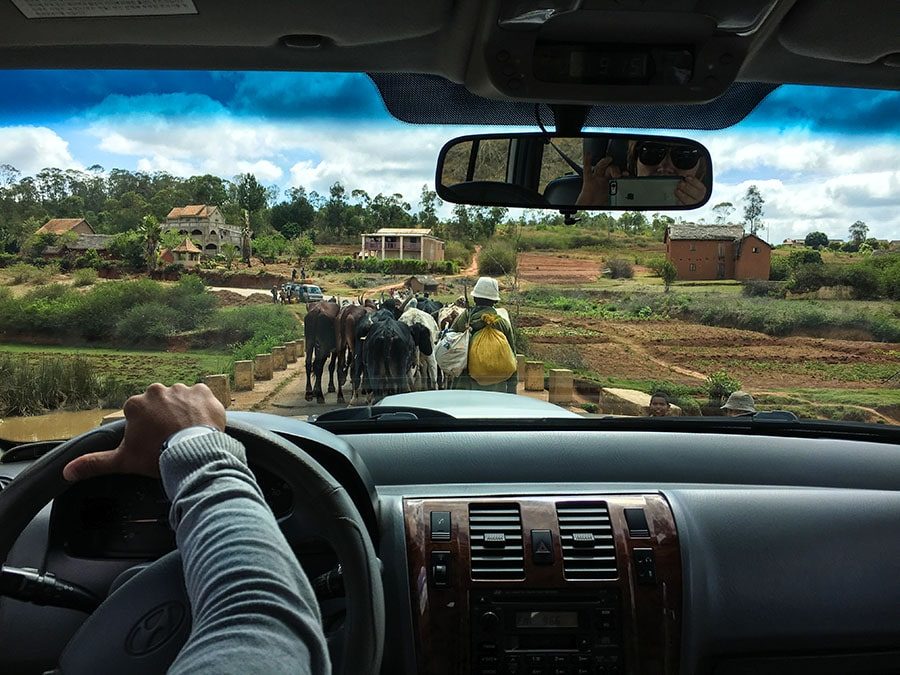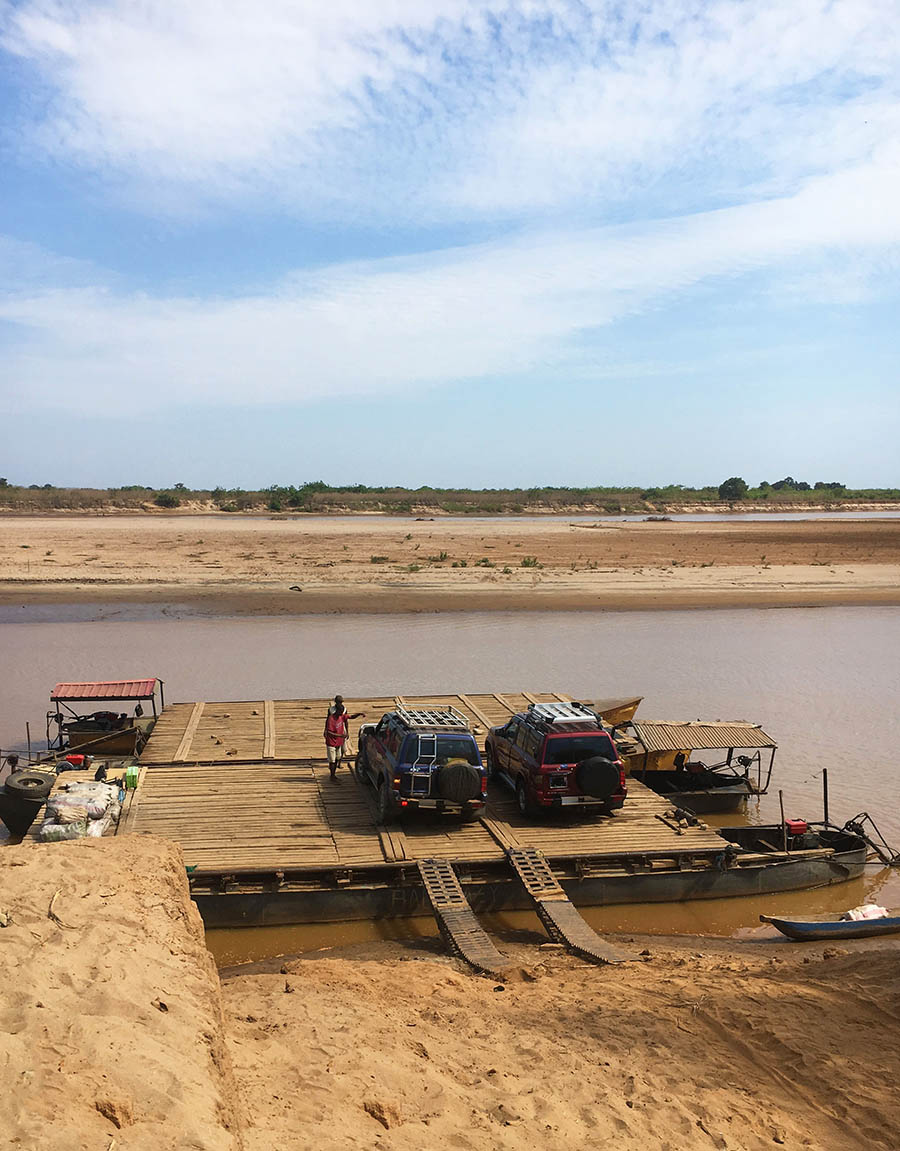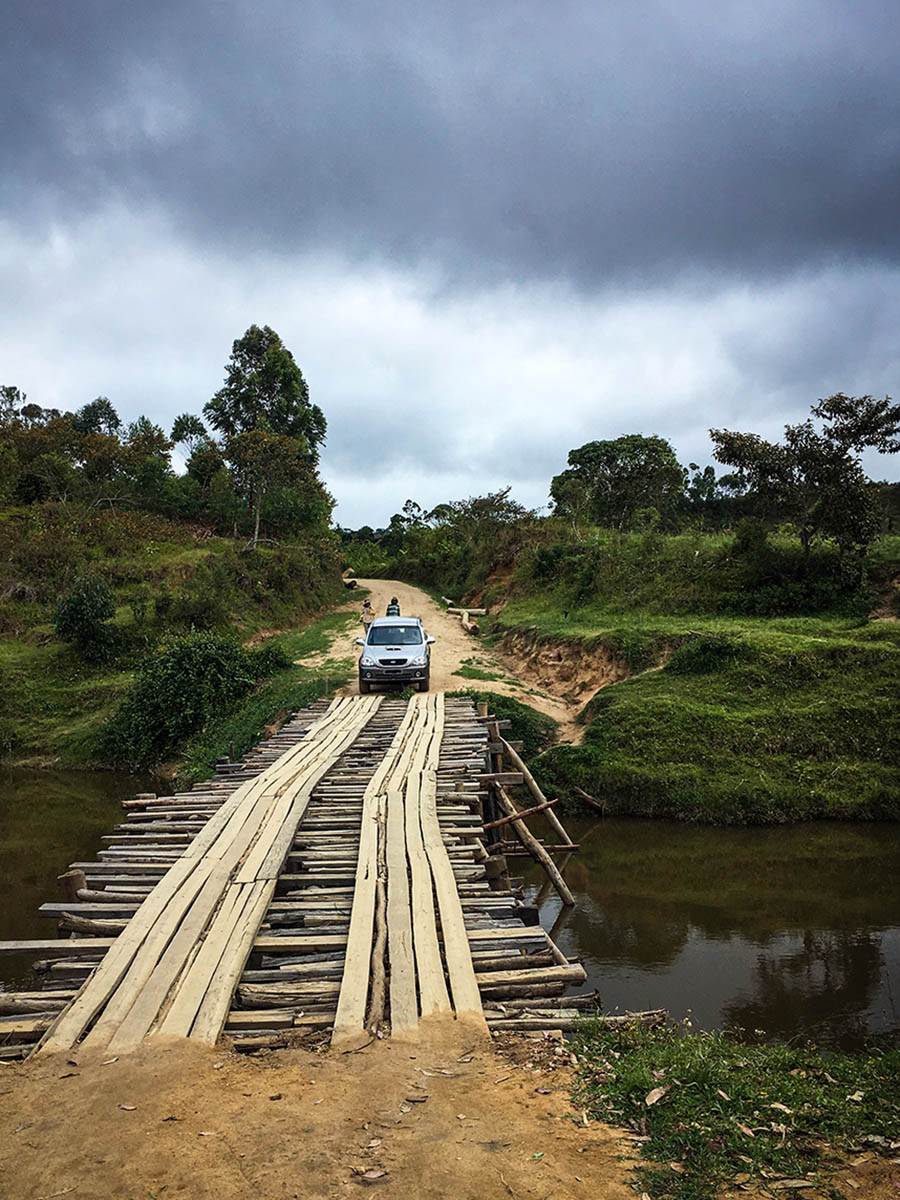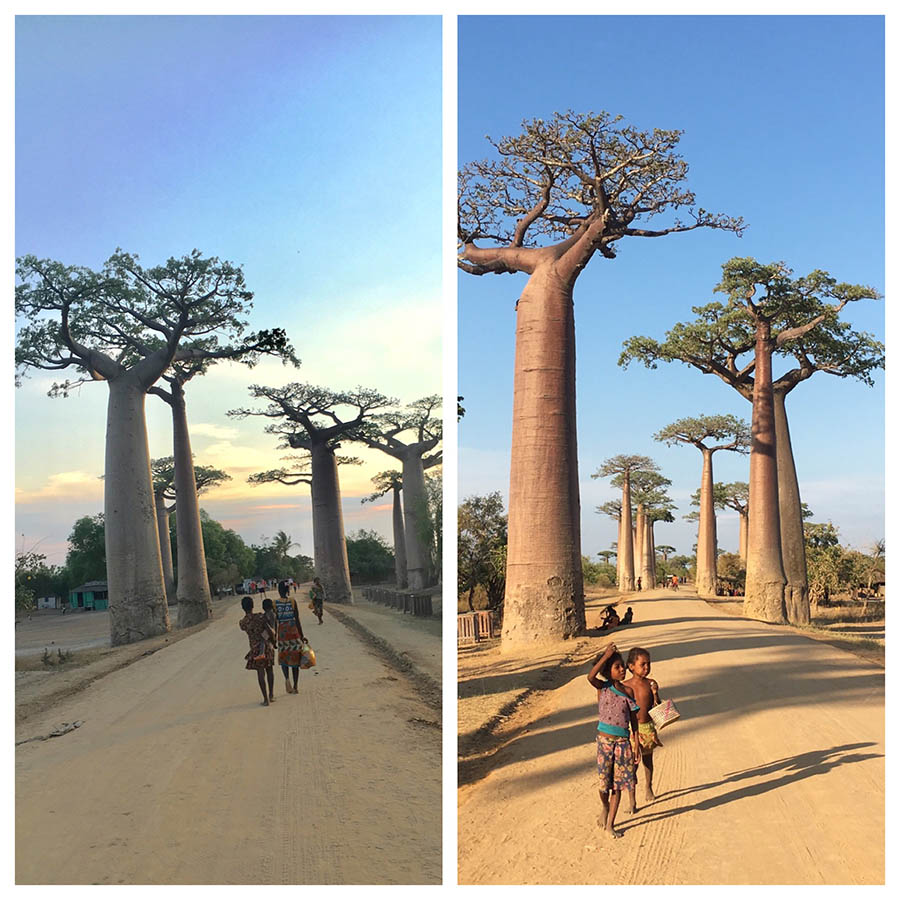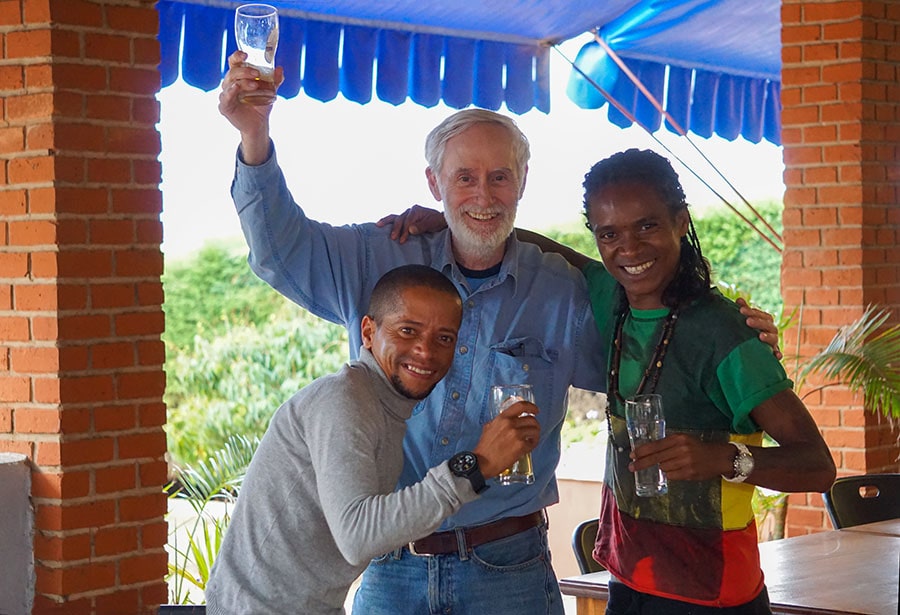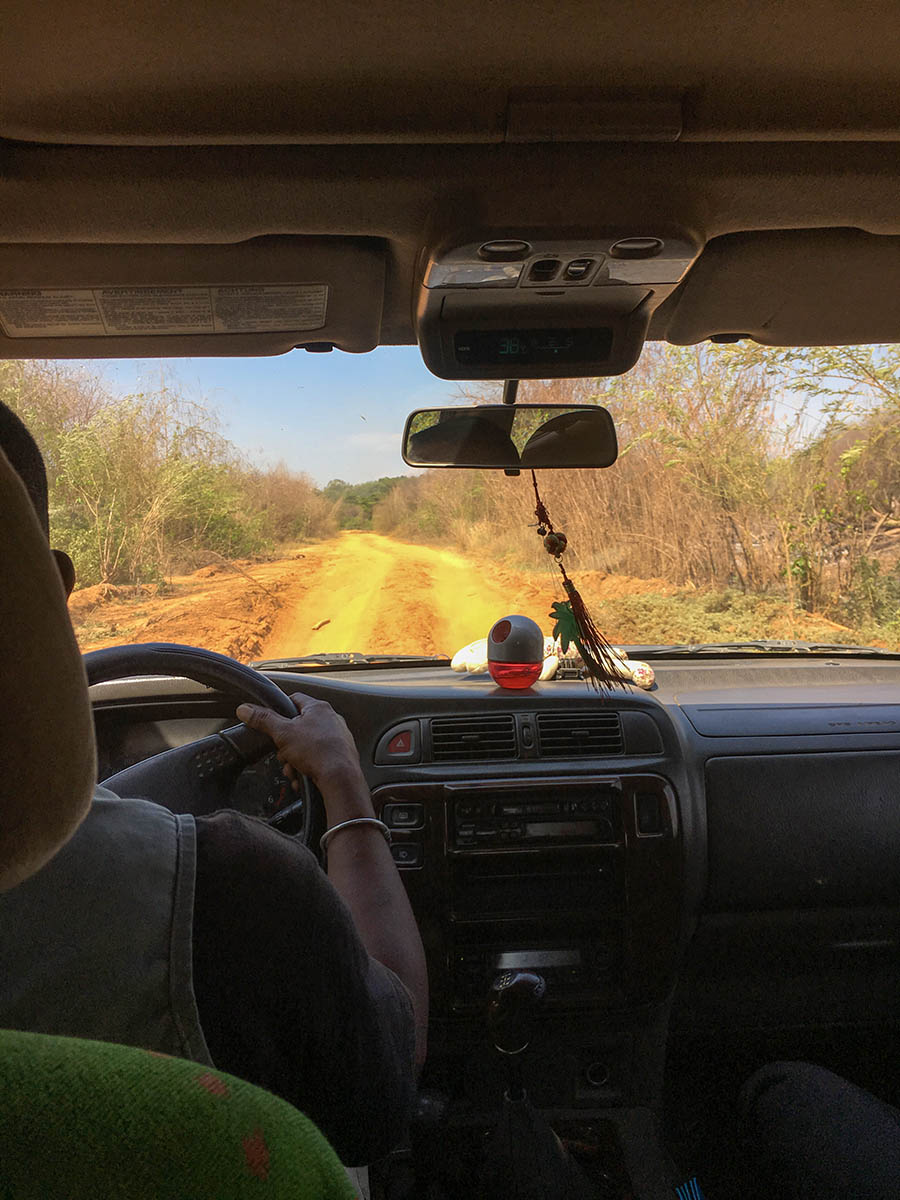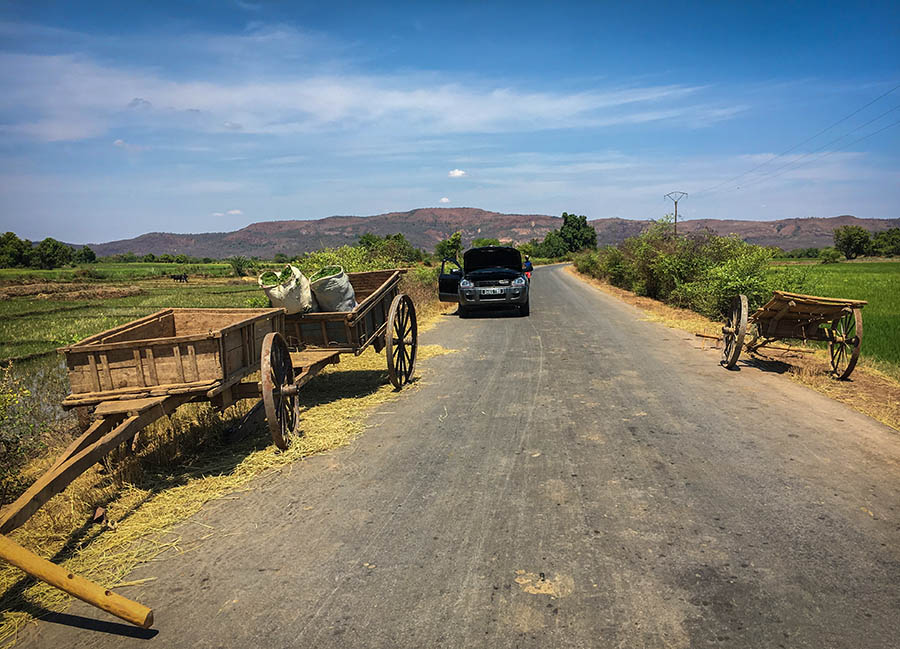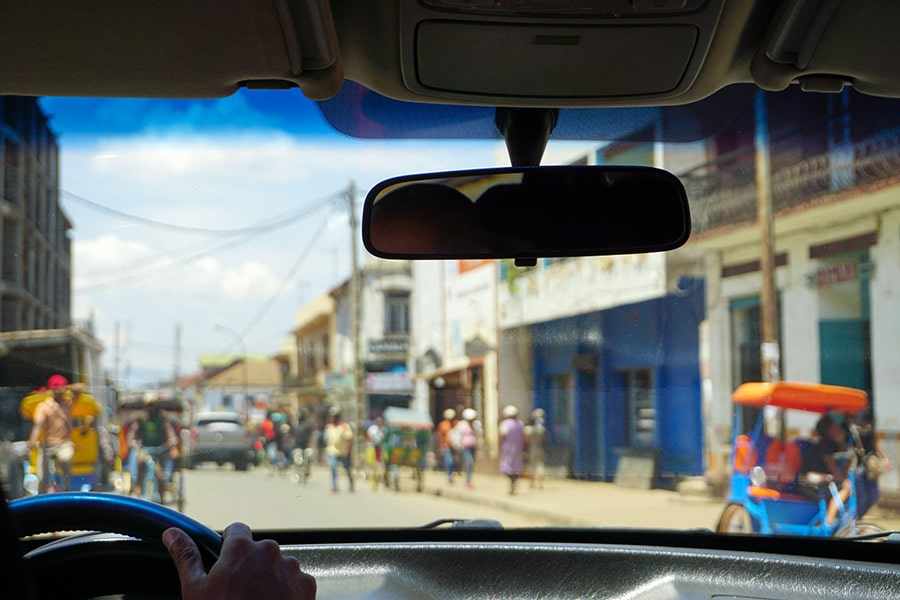Renting a car without a driver while traveling in Madagascar is possible and perfectly legal, but rather uncommon. And there are many good reasons for such a consensus among travelers. Before hitting the road, you can read about our experiences with Malagasy roads and driving conditions. Below, we share our thoughts about booking a rental car in Madagascar and what to expect from spending many days in a company of complete stranger(s) (your personal driver–guide, that is).
First, let me point it out – we love self-driving while on vacations. No other way of travel offers more flexibility and independence while travelling. There are places in the world, however, where driving around is just neither practical nor enjoyable. In our view, Madagascar is such a country.
Although a few intrepid souls still try their luck and do self-drive in Madagascar, the absolute majority of independent travelers visiting the country hire a car with a driver.
To Drive or Not to Drive
Our recent trip to the Southern Africa covered three countries, including Namibia, South Africa and Madagascar (see our complete trip itinerary here). While we were doing extensive self-driving in the former two countries, hiring a car without a driver in Madagascar just did not seem simple. Although we did find some occasional reports of “successful” self-drive trips on different travel forums, they did not cover our tentative route and described obstacles, which we were reluctant to go through on our trip to Madagascar.
Heading for Madagascar, one of the poorest countries in Africa, one has a plenty to worry about: personal safety, poor infrastructure and treacherous road conditions, overcrowded cities and villages, “ancient” car fleets and long distances between points of interest, just to name a few. In addition, our trip happened to coincide with the worst plague outbreak in Madagascar in the last 50 years. Although we cherished our privacy and independence, and had no prior experience with hiring a car WITH a driver, the compelling stories of fellow-travelers persuaded us to “go with the flow”.
Have your Itinerary Ready
Having done some research on the net, we had our tentative travel route penciled. The “grand plan” was to head out from Antananarivo (the capital) to Morondava on the west coast to spend a week visiting the unique deciduous forest of Kirindy and Tsingy Bemaraha National Park. Next we wanted to drive back to the central highlands and explore a couple of national parks and wildlife reserves along RN7 (without going all the way to Isalo). As a wrap-up, we would stay 5 days hiking in the primary and secondary rain forests of the Andasibe area east of Tana (Antananarivo).
Choosing a Car Rental Agent
With this itinerary in hand, we contacted 7 travel agencies, which were offering car rentals in Tana, and asked them for quotes and advice regarding our route. Most tour operators (except those who were primarily selling tour packages) got back to us with reasonably consistent rates for car rental $65-75 per day for a four-wheel drive (4×4) car (SUV). These rates also covered the cost for an English-speaking driver (including his accommodation and meals). The fuel was extra (also some rental companies did bake it into their quotes).
Some tour operators tried to talk us out of visiting Tsingy Bemaraha on the West coast due to the impassable roads in the area during the wet season. We were traveling to Madagascar in November just before the rainy season, but we decided to keep our itinerary unchanged and to try our luck. To learn about the advantages and the drawbacks of traveling to Madagascar, Namibia and South Africa during the shoulder (off-peak) season read this post.
After a brief period of email exchanges, we zeroed down on GMT+3 (Great Madagascar Tours) agency, which was run by a local couple out of Antananarivo. Anja was very responsive to all our inquiries and requests and it made all the difference for us. We felt we could trust this business with our upcoming adventure and the 20% credit card deposit (which, by the way, was the simplest and the most reasonable arrangement relative to what the other car rental agencies were proposing).
Got More Than Expected – Literally
Given the situation with the plague, which was raging in the larger cities at that time, we decided to pay off the remaining car rental balance upon our arrival to Tana and leave for our 13-hour long non-stop drive west to Morondava as soon as possible. To spare us a trip through a chaotic street scene of the capital to the office, Anja sent Clio (his wife and a business partner) straight to our Airbnb with the car rental contract and last minute travel instructions (and to collect the remaining car rental payment in cash. Cash is KING in Madagascar).
The biggest surprise came when Cleo casually told us that instead of ONE English-speaking driver, we would get TWO guys for the “price of one”. Apparently, they did not have one person who could do both. While this might not be a common practice (although we did read about similar occurrences after the fact), we now believe to have benefited GREATLY from having a driver AND a guide on a trip with us.
Our Crew and the Rental Car
Bright and early next morning, Tony (our Malagasy-speaking driver) and Martin (a talkative English-speaking guide) cheerfully showed up at the gate of our Airbnb. Still processing this unexpected doubling in “staff”, we loaded our suitcases into an aged but sturdy-looking 4×4 dark-blue Hyundai and crawled onto the backseat. The longest leg of our journey across the island was ahead of us.
Here, I have to tell you that we had to change rental cars 3 times (including an unplanned break-down along RN34, see below) during our 17-day trip across the country. The stretch of the road along the west coast of Madagascar between Morondava and Tsingy Bemaraha National Park is considered to be a “vulnerable route”. And this is not ONLY due to the rugged terrain and treacherous driving conditions (which turn impassible during the rainy season).
Road between Morondava and Bekopaka (Tsingy Bemaraha)
Most tourists we met on the West coast of Madagascar were traveling in “convoys” of several cars. The “resort” in the Kirindy Private Reserve, where we stopped overnight for wildlife watching in a unique dry deciduous forest, had several local guards equipped with rifles at each corner for guest protection.
Not surprisingly, our car rental company had a prior arrangement with a local Sakalava driver (Lo-Lo), who replaced Tony (the driver who brought us to the West coast from Tana) in Morondava. Originally from the village of Belo, Lo-Lo was now living in a solid-looking house equipped with a large satellite dish along the main street of Morondova. He had the advantage of being intimately familiar with the route to Tsingy (which was nothing more than a rugged single track clay-colored dirt road) and the people living along the way. He had a sturdy high-clearance 4WD dusty Nissan with local registration plates, which would serve us well during the next 5 days in this “wilder” corner of Madagascar.
The Long Haul Across the Country on RN34
Traversing Madagascar from east to west and back were the most dreaded parts of our journey (9-12 hours each way). Although it ran along a largely paved RN34, many stretches were tortuous and rough, with regular deep potholes and washouts, often time without any shoulders.
Needless to say, there were no amenities along this route and whenever we stopped for 5 minutes breaks, we did not expect any privacy as there are people walking around ALL THE TIME. We were told to bring “white gold” on the trip with us. What is “white gold”, you would ask? Try toilet paper!! Most villages we passed along RN34 do not have any electricity and with many people on foot and livestock walking on the road, driving became especially hazardous in twilight, closer to the sunset.
2 hours into our 9-hour long drive on the way back from Morondava to Antsirabe, our car suddenly broke down in the middle of nowhere. It was late morning, but the temperature already was creeping into the uncomfortable high 30s Celsius. After spending one hour in the open sun (it was even hotter inside the stalled car) we started worrying about the prospects of getting stuck there. Aborting our trip and going back to Morondava seemed the best option at the time.
Fortunately, our Tony was able to contact our other driver Lo-Lo in Morondava, who came over flying in his car (our generous tips the night before probably helped A LOT there), and drove us all the way non-stop to Antsirabe. Once again, we counted our blessings and felt lucky to have rented a “car with a driver”. Our trip itinerary was salvaged!
Navigating the Streets of Tana and Antsirabe
Although the roads within and around the larger cities, such as Antananarivo and Antsirabe were generally in a better condition, they were ALWAYS crowded. People were busy walking, selling and buying goods and just socializing.
Two-wheeled carts drawn by zebus or bullocks are still common sights on the roads of the highlands, especially around the cities and on market days. The rickshaw and the pousse-pousse, as it is called around there, are ubiquitous in the larger cities. And in Antsirabe, they seem to be a preferred mode of transportation. Throughout our trip in Madagascar, we experienced countless slowdowns to a crawl, traffic jams and hazardous driving situations in the densely populated area. All were masterly navigated by our expert driver(s) with a great deal of wisdom and patience.
Driving RN7 through the Central Highlands
Traditionally, the best developed exchange economy and, therefore, the best road system in Madagascar has been located in the Merina and Betsileo sections of the central highlands, south of the capital. RN7 remains the most popular route for tourists due to its relatively good driving conditions. However, do not expect the quality even remotely close to what you would experience in Namibia and South Africa.
Sense of Privacy vs Sense of Place- When you Rent a Car with a Driver
As most independent travelers, who contemplate a car rental with a driver-guide, we had valid concerns about our privacy (or lack of thereof) during our trip. At the end of the day, we concluded that it was a small sacrifice we were glad to have made. Tony and Martin were so much more than a driver and a guide for us. They were our guardians, travel companions and entertainers, who did everything in their power to make our trip safe, comfortable and memorable.
In fact, next time we rent a car with a driver, we will definitely consider hiring a duo again as it has many advantages relative to a modest increase in cost (mostly in tips). By having both a driver and a guide, we could keep our belongings and the rental car under supervision at ALL TIMES and have a translator/interpreter accompanying us at all sites of interest, including banks or local village markets. We could rely on Martin making phone calls and hotel reservations for us “on the go”, while Tony (or Lo-Lo) was taking care of the driving.
When it comes to the time off-the-road, it was entirely up to us how much privacy we had. On several occasions, we did invite Tony and Martin out for drinks and dinner. Otherwise, we would agree on a time to meet on the following morning or afternoon and retire to our room for the rest of the day. There were simply no written rules in the contract on that sort of thing.
You’ll figure it out as you go. Keep it simple and enjoy the ride from the passenger seat of your rental car!

